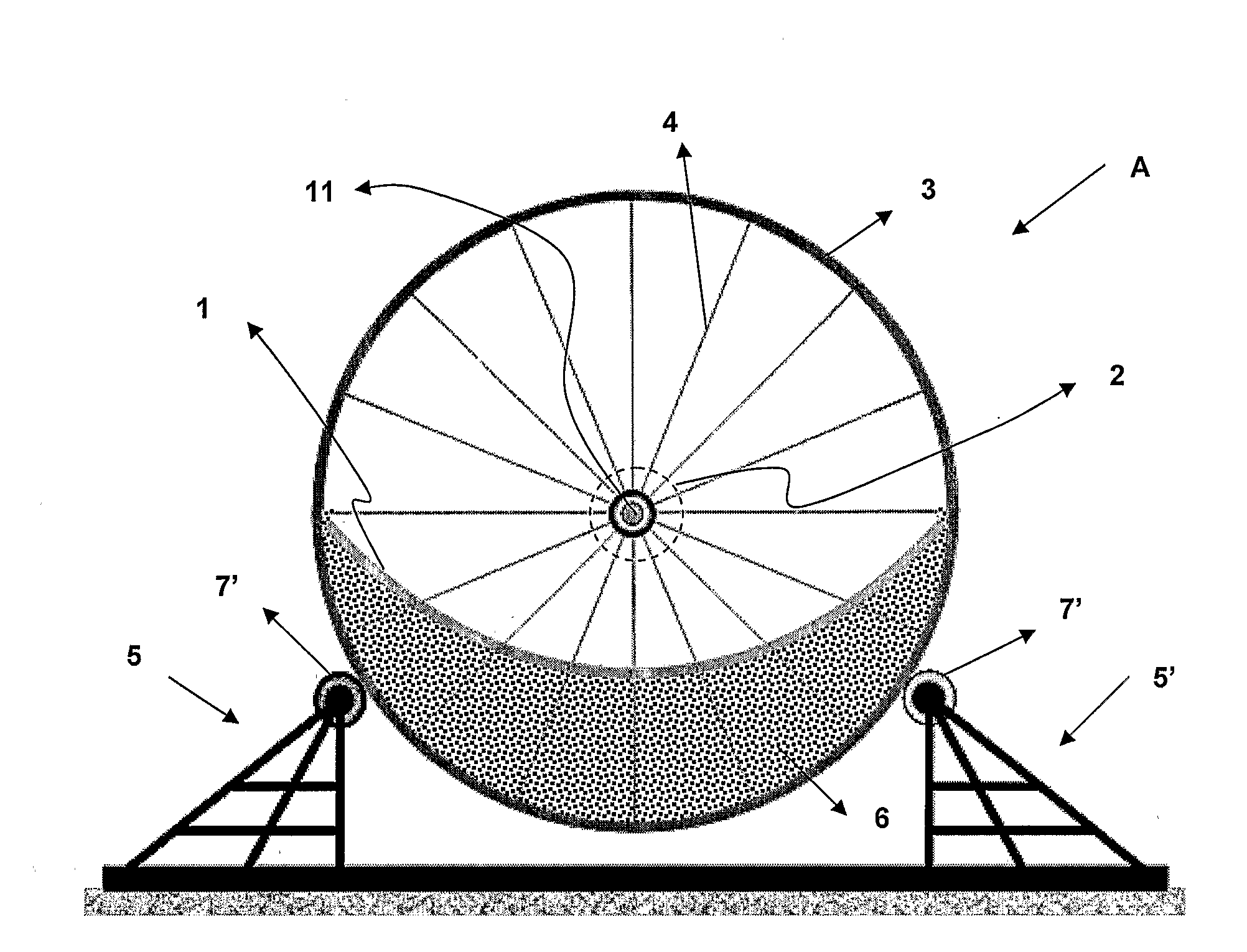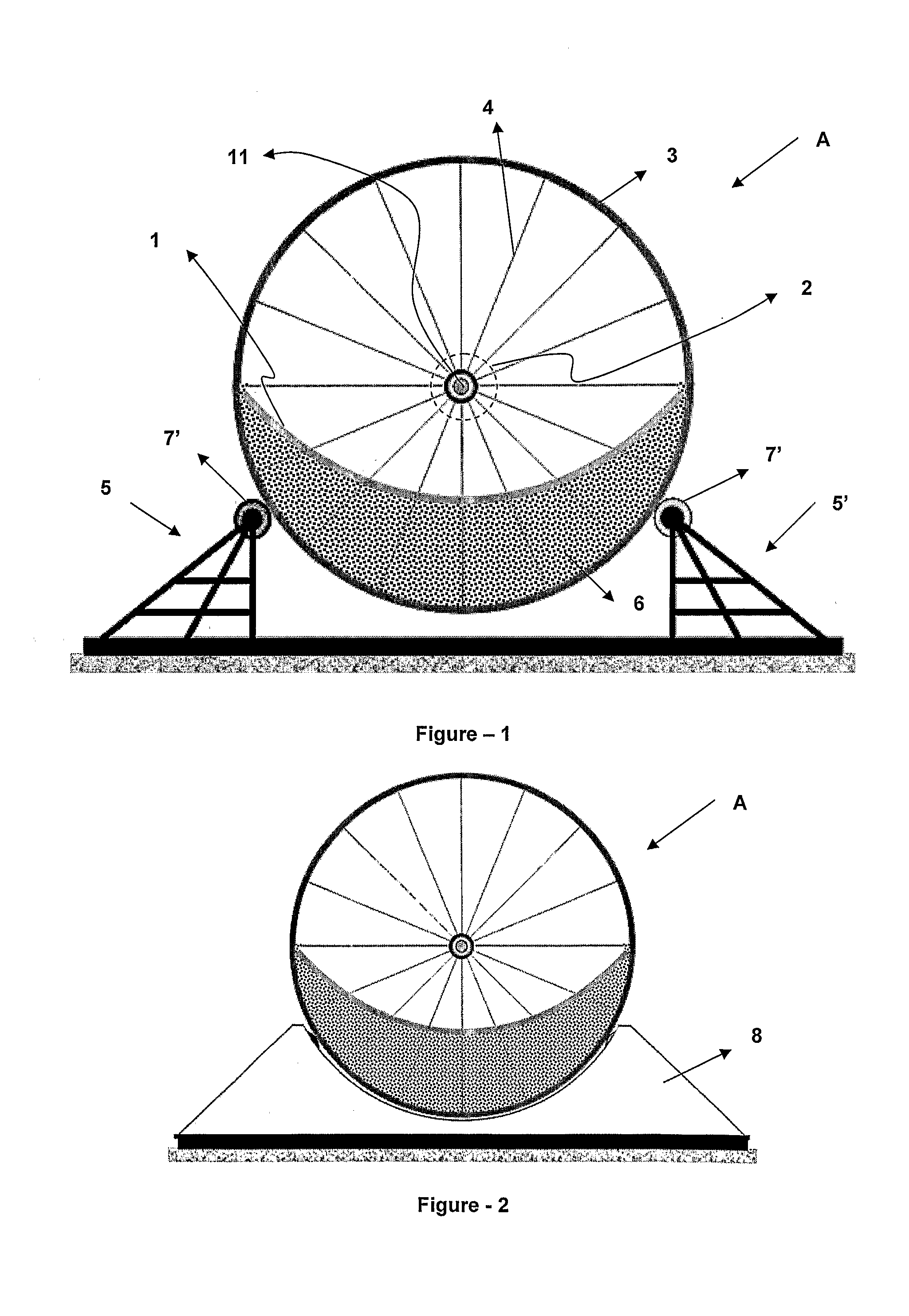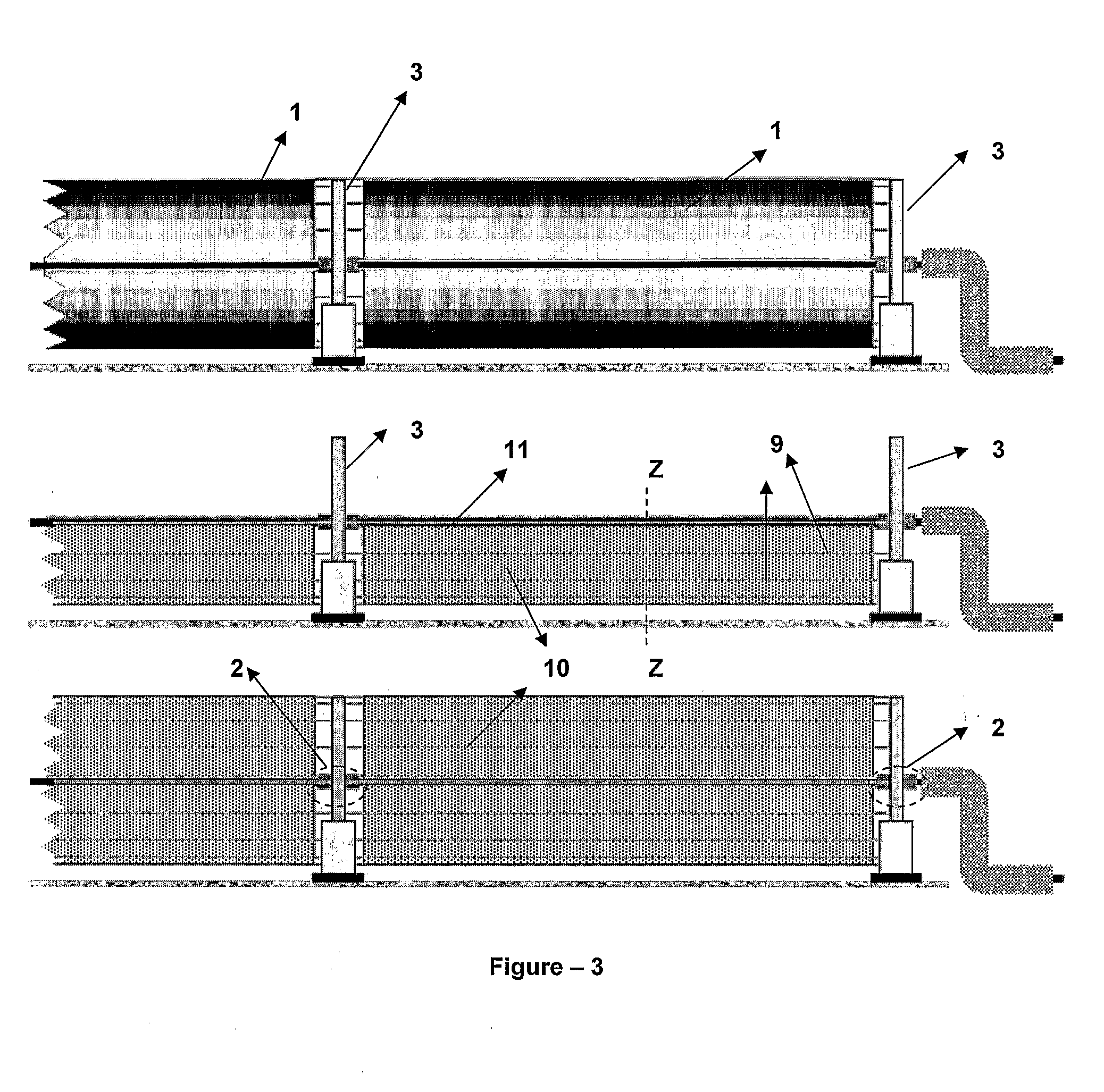Parabolic solar trough systems with rotary tracking means
a technology of solar collectors and rotary tracking means, which is applied in the direction of solar heat collectors for particular environments, solar radiation concentration, moving/orienting solar heat collectors, etc. it can solve the problems of only decreasing the rate of breaking of the structure, increasing the possibility of breaking of both reflectors and tubes during operation, and reducing the bending and torsion effect of the motor, so as to reduce the load on the motor and reduce the bending and torsion
- Summary
- Abstract
- Description
- Claims
- Application Information
AI Technical Summary
Benefits of technology
Problems solved by technology
Method used
Image
Examples
Embodiment Construction
[0052]FIG. 1 provides a side view of the inventive solar trough field system (A). A solar trough field system (A) comprises multiple parabolic reflectors (1), support circles (3) of which the center coincides with the focus of the parabolic reflector (1) and which are used in order to support the reflector (1); core mechanisms (2) which are located on the center of the circles (3); guy wires (4) which connect the circle (3) and the core mechanism (2) to each other; side support units (5, 5′) which bear the support circles (3) from their outer surfaces; lightweight filling materials (6) which support the reflectors (1) from their lower parts; thermal receiver tubes (11) which pass through the center axis of the circles (3). The solar trough field system (A) is rotated around the center axis of the circles (3) and in this way; the parabolic reflectors (1) are also directed towards the sun by rotating in this rotation axis which is their focus. Thus, the parallel beams coming from the ...
PUM
 Login to View More
Login to View More Abstract
Description
Claims
Application Information
 Login to View More
Login to View More - R&D
- Intellectual Property
- Life Sciences
- Materials
- Tech Scout
- Unparalleled Data Quality
- Higher Quality Content
- 60% Fewer Hallucinations
Browse by: Latest US Patents, China's latest patents, Technical Efficacy Thesaurus, Application Domain, Technology Topic, Popular Technical Reports.
© 2025 PatSnap. All rights reserved.Legal|Privacy policy|Modern Slavery Act Transparency Statement|Sitemap|About US| Contact US: help@patsnap.com



